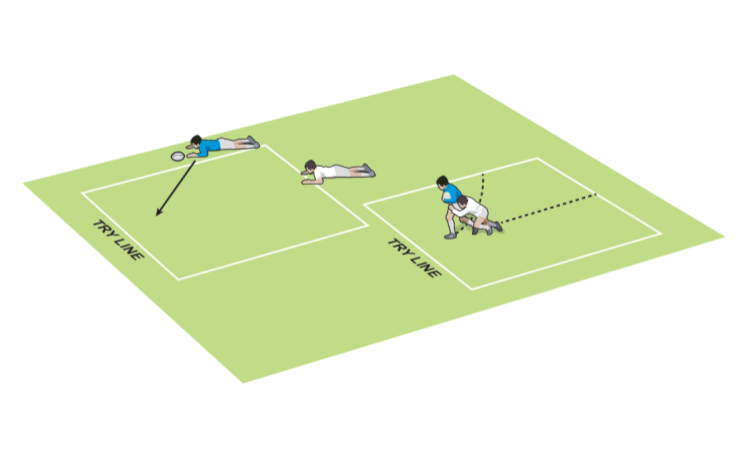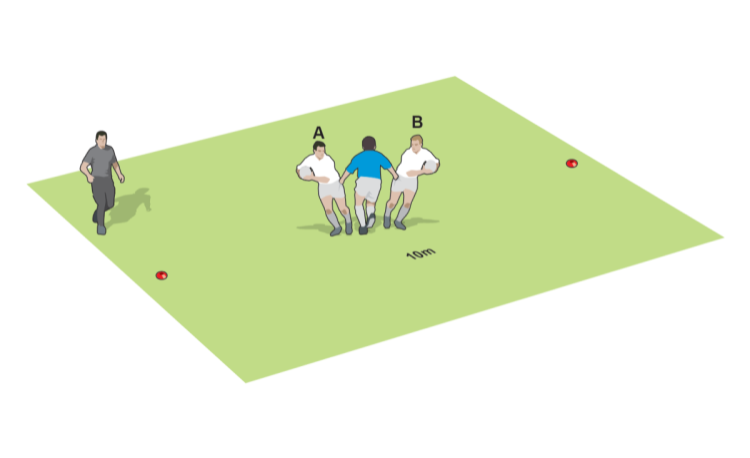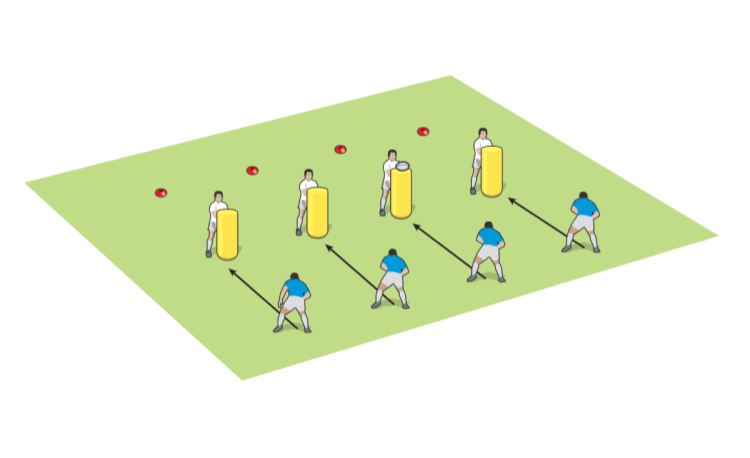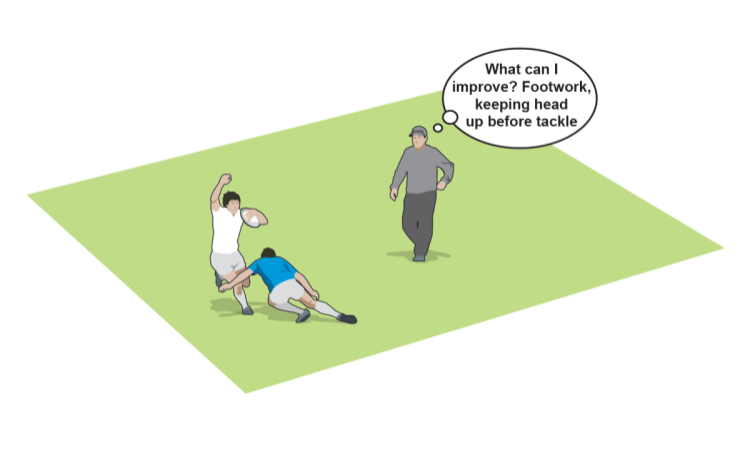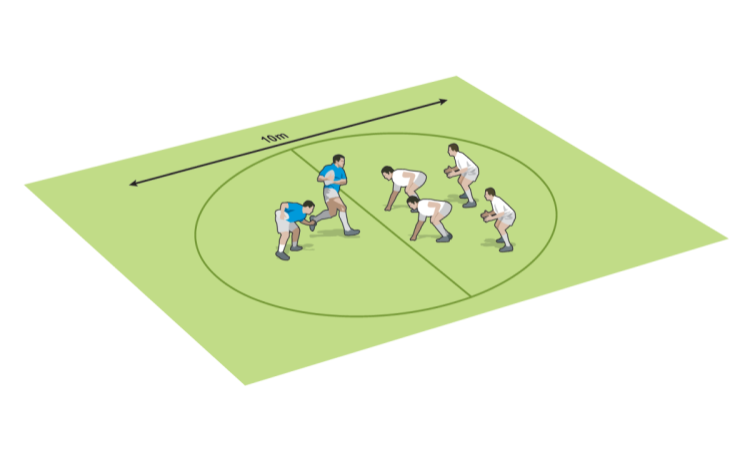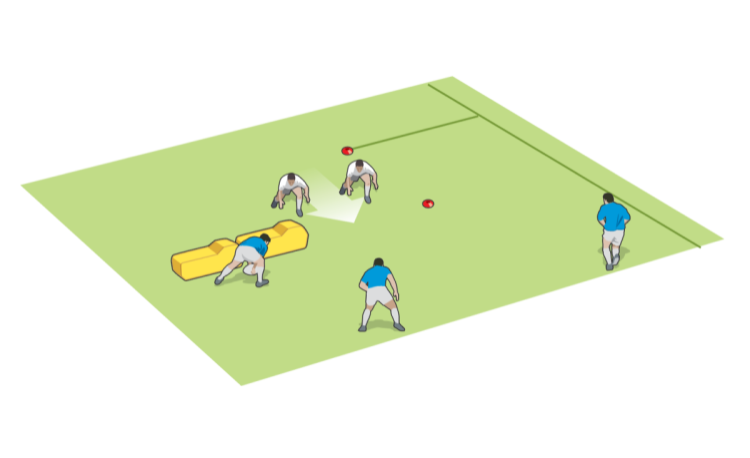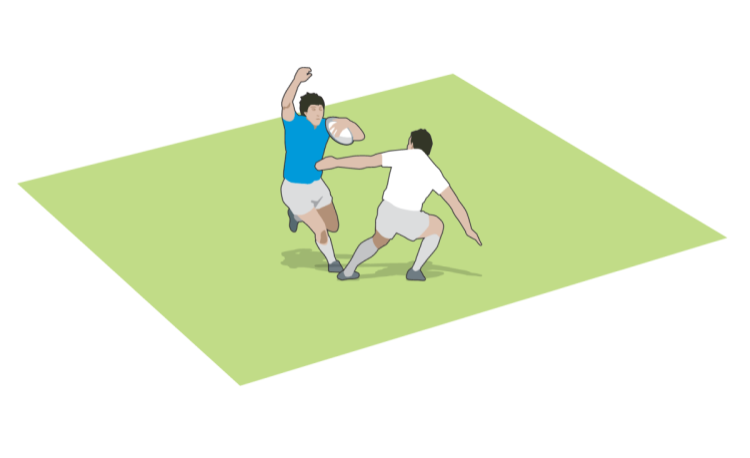You are viewing
1 of your 2 free articles
Challenging for the tackle ball
The player who "steals" the ball at the tackle (sometimes known as the "jackal") will often find that as he picks up the ball, the opposition support players arrive and try to knock him back off it.
To keep possession, he needs to stay in a strong, low position and pull the ball into his chest. As he is knocked back, he protects the ball by turning his body so he lands facing his own team and on his side.
Once on his side he has to make the decision whether to pop the ball up to a support player or present it on the ground as far back as he can reach.
This decision depends on how close his support players are and whether or not the opposition clearing player has stayed on his feet or gone to ground.
Set up lots of live scenarios in your rugby training sessions so your players get used to making these decisions in game-like situations.
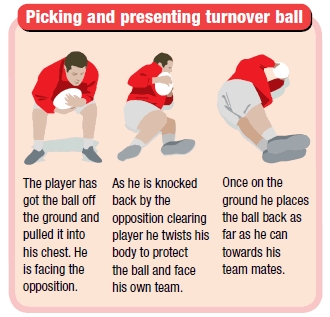
To get more rugby coaching tips, drills and games delivered direct to your inbox, click the link to subscribe to Rugby Coach Weekly, which is designed for all coaches of developing players.
Click the link to see a London Irish training video showing two groups of six players continuously recreating the Jackal turnover.
Newsletter Sign Up
Coaches Testimonials

Gerald Kearney, Downtown Las Vegas Soccer Club

Paul Butler, Florida, USA

Rick Shields, Springboro, USA

Tony Green, Pierrefonds Titans, Quebec, Canada
Subscribe Today
Be a more effective, more successful rugby coach
In a recent survey 89% of subscribers said Rugby Coach Weekly makes them more confident, 91% said Rugby Coach Weekly makes them a more effective coach and 93% said Rugby Coach Weekly makes them more inspired.
Get Weekly Inspiration
All the latest techniques and approaches
Rugby Coach Weekly offers proven and easy to use rugby drills, coaching sessions, practice plans, small-sided games, warm-ups, training tips and advice.
We've been at the cutting edge of rugby coaching since we launched in 2005, creating resources for the grassroots youth coach, following best practice from around the world and insights from the professional game.




